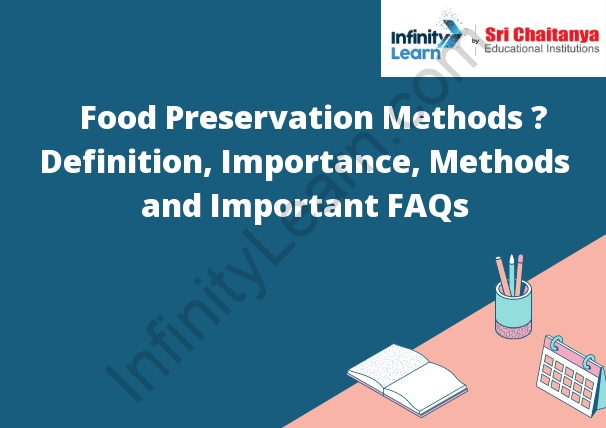Table of Contents
What is Food Preservation?
Food Preservation Methods: Food preservation is the technique of preventing the growth of bacteria, fungi, and other microorganisms, as well as slowing the oxidation of fats, by either chemical or physical means. Food preservation is the process of keeping food from decaying. There are many different ways to preserve food, but the most common are canning, freezing, and dehydrating.

Importance of Food Preservation
It is the process of preventing the growth of bacteria, yeast, or mold, and slowing the oxidation of fats and oils. Food preservation techniques include dehydration, canning, freezing, and refrigeration. Food preservation is important to maintain the quality and extend the shelf life of food.
Methods of Preservation
There are many methods of food preservation. One way is to can the food. This involves heating the food to a high temperature to kill any bacteria and then sealing it in a jar or can. Another way to preserve food is to freeze it. This involves freezing the food to a very low temperature to kill any bacteria. A third way to preserve food is to dry it. This involves removing the water from the food to kill any bacteria.
Drying
Drying is the process of removing water or other soluble liquids from a solid, semisolid, or liquid material by evaporation. The water or other liquids may be removed by heat or by a vacuum.
Refrigeration
Refrigeration is the process of cooling a substance below its normal atmospheric temperature. In the food industry, it is used to preserve perishables by slowing the rate of bacterial growth. The three main types of refrigeration are vapor compression, absorption, and ammonia.
Freezing point depression
When a solute is dissolved in a solvent, the freezing point of the solvent is lowered. This is because the addition of the solute decreases the entropy of the solvent system. The freezing point depression is a measure of the decrease in freezing point caused by the solute.
Crystallisation
Crystallisation is a process of forming solid crystals from a liquid or a gas. The crystals grow by a process of addition of material to the growing crystal. The material may be an impurity or a solvent.
Crystallisation is used in many industries to produce products such as salt, sugar, and aspirin.
Smoking
- Smoking is a leading cause of cancer. If you smoke, quitting will reduce your risk of cancer.
- There is no safe level of smoking. Even smoking a few cigarettes a day increases your risk of cancer.
- Smoking harms nearly every organ in the body and causes many types of cancer, including cancers of the lung, mouth, throat, esophagus, stomach, pancreas, kidney, bladder, and cervix.
- also increases the risk of leukemia, lymphoma, and other cancers.
- Smoking can also cause infertility, early menopause, and impotence.
- is the leading cause of preventable death in the United States.
- Secondhand smoke is also very dangerous. It causes cancer and other health problems in nonsmokers.
- There is no safe level of exposure to secondhand smoke.
- For help quitting smoking, call the national quit smoking hotline at 1-800-QUIT-NOW.
Additives
Some people worry about the possible health effects of food additives.
Additives substances that added to food to improve its appearance, flavor, or shelf life. Some people worry that these additives might be harmful to their health. However, most additives considered safe. The U.S. Food and Drug Administration (FDA) has strict guidelines for how much of each additive can used in food.
If you are concerned about the safety of food additives, talk to your doctor.
Preservatives
There are a variety of preservatives used in cosmetics, and each serves a different purpose. However preservatives are necessary in cosmetics to prevent the growth of bacteria, mold, and other organisms that can cause spoilage or skin irritation.
The most common preservatives used in cosmetics are:
- parabens
- phenoxyethanol
- benzyl alcohol
- ethylhexylglycerin
- methylparaben
- also propylparaben
If you are concerned about the use of preservatives in your cosmetics, be sure to read the ingredient list carefully. Many products that marketed as “natural” or “organic” do not contain preservatives, so they may not be as safe as products that do contain them.








